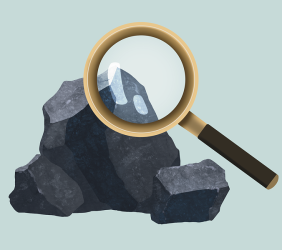
Frank Hawthorne, distinguished professor emeritus in the department of earth sciences at the U of M, has spent his career studying how atoms arrange themselves in minerals and synthetic compounds to build a theoretical foundation in the field.
“If mineralogy is to move beyond descriptive science, it needs a theoretical basis whereby we may understand and predict the structures, chemical compositions and behaviour of minerals in earth processes at the scale of atoms and chemical bonds,” Hawthorne said. “The development of such a basis is the central theme of my work.”
Although officially retired, Hawthorne said he still spends several hours a day working on science and publishing. The aim of developing a theoretical foundation is to better manage the materials we live with, from minerals to industrial byproducts, he explained.
“If we can understand how the atoms are arranged in detail at the atomic level, we know how to deal with those materials,” he said. “We can process them […] maybe change their character so, for example, they’re less toxic.”
One early project linked his work to environmental concerns. As a graduate student, Hawthorne analyzed asbestos minerals contaminating the water supply of a U.S. city on Lake Superior. His findings contributed to a court case that forced a mining company to redesign its waste disposal practices.
His career also included high-profile research on uranium minerals. He and one of his postdoctoral fellows studied schoepite, a uranium mineral that formed from altered fuel rods. Their work revealed errors in earlier studies and reshaped how nuclear waste reactions were understood.
“The first crystal I put on my instrument […] exploded,” Hawthorne recalled. “We spent a lot of time trying to find a way to get them to hold together so we could do experiments.” Finally, sealing the schoepite with nail polish after dipping it in liquid nitrogen worked, he explained.
Hawthorne’s recent work has turned toward resolving long-standing questions about atomic sizes. Hawthorne found that data derived from crystal structures, widely used since the 1920s, do not represent actual atom sizes but rather distances between atoms. The discovery helped resolve a long-standing debate between quantum mechanical calculations and experimental results.
“This resolved controversy between quantum mechanical calculations and the results of all of these hundreds of thousands of experiments on how far apart atoms were in solids,” he said. According to Hawthorne, it also challenged decades of accepted theory and forces new ways of interpreting crystal structures.
Recognition of his work spans the globe. Hawthorne became a member of the Russian Academy of Sciences in 2005 after presenting research on nuclear waste storage. He later received its gold medal in 2024. He is also a companion of the Order of Canada and a Killam Prize winner in natural sciences.
For students considering graduate research, Hawthorne advised finding a supervisor who has time to mentor them and encourages independent work in a topic that is not easy. “It should be difficult, but not too difficult,” he said. “I’ve always thought of the students’ work as their work, not my work.”



